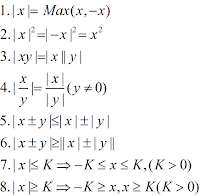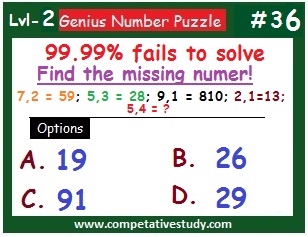Constant Function:
A function f :X->Y is called a constant function if its range is a singleton set i.e., f(x) = c for all x E X where c is some constant.
NOTE : For a function of real variable
Identity Function:
A function f:X->X is called an Identity Function if
Equality of Function:
Two functions f:X->Y and g:X->Y are said to be equal iff f(x)=g(x) for all x E X i.e., iff Df = Dg and Rf = Rg.
Polynomial Function:
The function f(x) = a0 + a1x +...+anxn , where a0,...,an are real constants such that an not equal to 0 and "n" is a positive integer, is called a Polynomial Function in "x" with real co-efficients and it is of degree "n".
Power Function:
A function f: R->R defined by, f(x)=xa, a E R is called a power function.
Rational Function:
A function defined by the quotient of two polynomial functions is called a rational function. Thus R(x) = P(x)/Q(x), where P(x) and Q(x)[q!=0]are polynomial functions, is called a rational function.
Irrational Function:
A function involving one or more radicals of polynomials is called an irrational function
Absolute value Function:
The absolute value function or the numerical value function or the modulus (mod) of a real number x, denoted by |x|, is defined as
|x| = x if x>0
or, |x| = -x if x<0 font="">
or, |x| = 0 if x = 0
Properties of Modulus of a real number
The function f : R->R defined by f(x) = |x|, is called Modulus Function.
Here, Df = R, Rf = R+
Signum Function:
The Signum of the real number x is defined as
The function f:R->R given by f(x) = Sgn(x) is called a Signum function. Here Df and R(f)= {-1, 0 , 1}.
Greatest Integer Function:
For all x E R. Let [x] denote the greatest integer in x not greater integer in x not greater than x.
The function f: R->R given by f(x) = [x] is called greatest integer function or the step function.
Note. Here Df = R and Rf = Z, set of all integers.
Exponential Function:
The function f:R->R defined by f(x) = ax, where "a" is a positive real number different from 1, is called an exponential function.
Here Df = R and Rf = R+ - {0}.
Logarithmic Function:
Let f : R+ - 0 ->R be defined by f(x) = logax where a[not equal to 0], and a[not equal to]. Then f is called a logarithmic function.
Here Df = R+ - {0}, Rf = R.
Periodic Function:
A function y=f(x) defined on a domain X is periodic if there exists a constant a>0 such that f(x+a) = f(x-a) =f(x) for all x E X.Monotonic Function:
Let f: [a,b]->R be a function. The function f is said to be
iv. strictly monotonic decreasing on [a,b] if V x1,x2 E[a,b],
Composition of functions:
Let f : X-> Y be defined by y=f(x)
and g: X-> Z be defined by z= g(y)
then, h: X->Z defined by h(x) = g(f(x)) is called composite function.









0 Comments